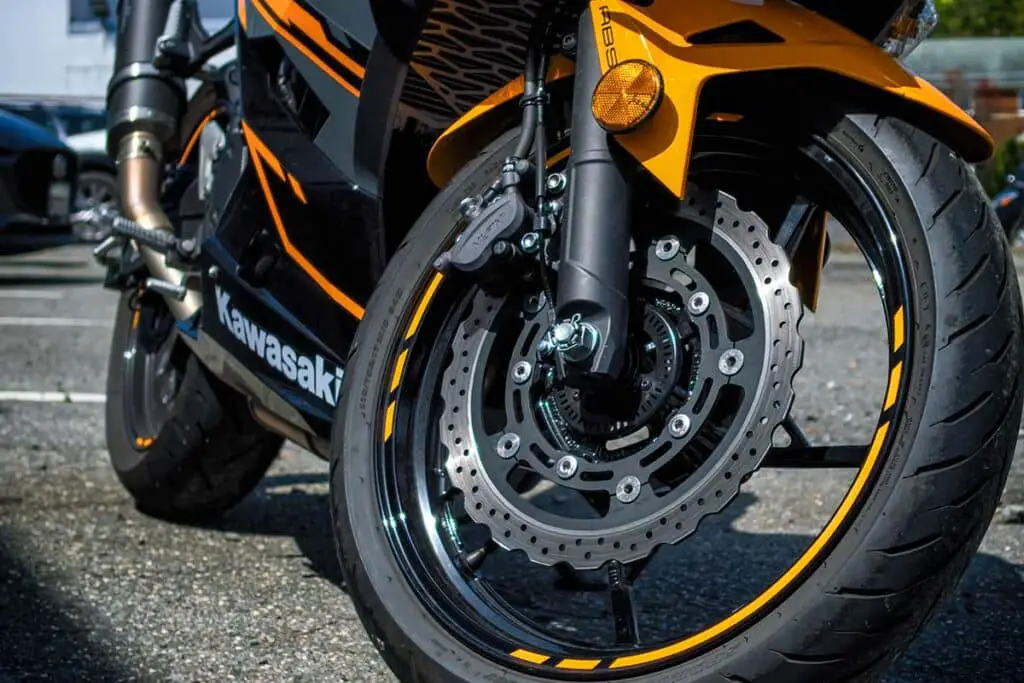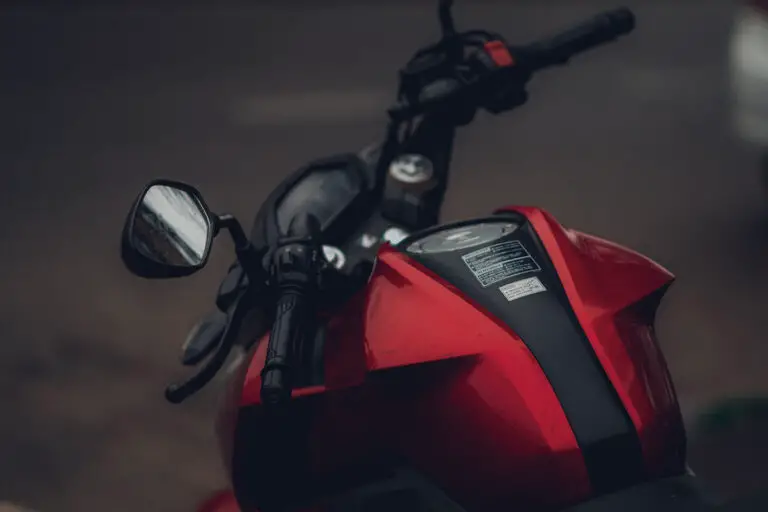What is ECU Flashing? Guide, Pros & Cons
Disclosure: We may get commissions for purchases made through links in this post.
Vehicle and motorcycle owners know too well that factory settings – be it air-fuel mixture or speed rating – are always conservative. And while there is good reason behind this setup (safety of beginner riders, for instance), stock settings undeniably limit the optimal performance of the vehicle or bike in question. Thankfully, ECU flashing is a thing – something that we will learn more about in this guide.
An ECU flash is a procedure that alters or remaps the read-only part of your ECU chip or EEPROM (Electronically Erasable Programmable Read Only Memory). It also removes OEM-programmed restrictions in the ECU, impeding optimal power output and throttle responsiveness.
ECU flashing is a sound solution for resolving engine problems and optimizing performance. However, it is not a Band-aid fix to engine or drivetrain damage resulting from the use of substandard fuel, vehicle abuse, or driver neglect. Moreover, it is not a procedure to be performed without considerations – details of which will be in today’s article.

What Is ECU Flashing?
ECU flashing, by definition (Foreign Affairs Motorsports), is a procedure that “updates the software that runs your vehicle by changing or modifying the vehicle’s memory chip in the ECU.” Simplified, it is a term that refers to updating your ECU software or flash memory with altered program codes so that your vehicle or motorcycle runs smoothly and more in tune with your riding style (and other requirements).
The process is usually paired with other performance-enhancing mods such as chassis bracing, installing braided brake lines, and upgrading suspension components.
In stock form, ECUs are configured to monitor different aspects of the engine and allow for a wide range of operational conditions and riding styles. But because they are far from optimal (partly due to gatekeeping certain performance facets), they need to be tuned to correct factory-setting deficiencies and bring out the full potential of a vehicle or motorcycle.
This is where ECU flashing comes in. An ECU flash allows the alteration of various maps and settings in the stock ECU, significantly improving engine performance.
Program Flash vs Data Flash
There are two segments to ECU flashing: program flash and data flash. A program flash is remapping or flashing the area responsible for controlling logic and where the entire software code resides.
A data flash deals with the area where variables like constants, curves, and maps reside. These calibration variables are only referred to by the ECU software when needed.
ECU Flash vs Power Commander
When it comes to tweaking the ECU, these two are often confused with each other. I can only speculate the reason behind the confusion, as an ECU flash and the use of a module or other piggyback unit are two entirely different things.
For the most part, ECU flashing does not require any extraneous tool to remap the ECU, alter numerical values, and change programmed instructions apart from a scanner or software reader.
Conversely, a module – more popularly known as a Power Commander – is an external component in itself. It sits alongside the ECU and hijacks input and output signals from the sensors to the ECU to the power mill. It modifies these signals according to how a rider would want these instructions to be interpreted by the engine.
Which Is Better?
Public opinion is split. Those more comfortable with driving hundreds of miles to visit a tuning shop replete with a dynamometer and an in-house remapping savant would naturally attest to an ECU flash as the route to go.
They believe that flashing is not only the sole means to fully bend a vehicle or motorcycle’s ECU to a rider’s will but also the only way to access and tinker with the unit’s throttle map.
On the other hand, owners who prefer convenience would go for plug-and-play Dynojet Power Commander V 15-027 (view on Amazon) and the like, which practically yields the same results. These modules can be ordered online and are delivered pre-programmed to your doorstep.
They clip onto existing motorcycle wiring harnesses and sometimes come with software that enables module programming at home. Best of all, no wire cutting or splicing is required (although this last bit is still contingent on the complexity of the module’s design).
Benefits of an ECU Flash

Arguably, remapping or flashing an ECU is believed to give a vehicle or motorcycle that “instant punch” or lift in power output and performance. Here are a few of its advantages:
- Maximizes thermal efficiency and makes a 25–30% increase in power output possible
- Enhances maximum torque with the aid of a high-performance exhaust like an Akrapovic Evolution Titanium Full System Exhaust – Titanium With Carbon Fiber Cap (view on Amazon)
- Results in higher efficiency and a 5–10% reduction in fuel consumption (provided driving style does not change after the ECU reflash)
- Improves speed rating, drivability, and overall performance (when done right)
- Adjusts RPM cutoffs (my advice is to tread on this route carefully)
- Resolves battery drain and excessive oil consumption problems
- Addresses twitchy throttle issues and resets error codes
- It helps maximize the life of brake pads and accommodate tires with higher speed ratings
- Reduces carbon deposits (making for cleaner emissions), shift flares, and transmission slippage
- Less complicated compared to performing mechanical mods like the installation of a bigger turbocharger
Bear in mind that ECU flashing does not rectify stumbling, flat spots, and hesitation. These symptoms usually indicate incorrect fueling at a given RPM and payload and will need to be addressed individually.
For instance, flat spots can be prevented by refraining from underinflating tires or parking your vehicle or motorcycle in cold weather overnight.
Problems Linked to ECU Flashing
Flashing an ECU without making relevant changes on a stock engine is counter-intuitive (if not normally leading to adverse consequences). There is simply no point in an ECU flash not coupled with bits and bobs taking advantage of the capabilities of the remap. If anything, it will only result in engine problems and long-term loss.
Thermal-Mechanical Stress
These situations aside, you can expect increased thermal-mechanical stress, fuel consumption (in instances where top speed is prioritized), and effects on engine and drivetrain longevity, at the least. Engine margin and drivetrain tolerances are pushed closer to their limits due to increased torque and power outputs.
The warranty can be voided if the ECU flashing is not approved by the manufacturer. And depending on the make and model, you may also discover that your motorbike or vehicle cannot be flashed or “chip tuned.”
Chip Tuning
Modern ECUs do not allow tuning through the OBD port due to security measures. For ECU flashing to occur, a tuner may need to take the ECU out of the vehicle and connect it directly to a computer via the BDM (Background Debugging Mode) interface on the unit itself. Sometimes, a special sprocket must be soldered into the ECU to read the software.
External ECM
Some modern ECUs are inaccessible via conventional means, as OEMs protect them from external access. For these types, an external ECM or control module is required. The latter has its own software and is mated to the engine instead of the transmitters and ECU (as with powerboxes or power commanders). Although ECMs are considered more reliable for tuning, some owners find them inconvenient.
Since mods have been done to a vehicle or motorcycle, ECU flashing does not always guarantee performance gains. One good example of this is flashing naturally aspirated engines. Because it does not come with a turbo, remapping gains on this power mill are typically close to negligible (this explains why an ECU flash is rarely done on this type of engine).
Considering these challenges, an ECU flash may not always be needed. If your objective is to increase power, upgrading your vehicle or motorcycle’s steering, suspension, braking, and transmission components may suffice.
How to Do an ECU Flash
ECU flashing takes 30 minutes to three hours, depending on whether or not your car or motorcycle is OBD flash compatible (provided the file from the ECU does not require further decoding). In general, the process requires these steps, as follows:
- Place a battery pack on the vehicle or motorcycle to ensure constant power and proper voltage supply while loading the software into the ECU.
- Bring a windows-based laptop with a stable internet connection to download the reflash file into the ECU computer. It Still Runs recommends downloading and installing EcuFlash from OpenECU, as the freeware program has been proven to work with most vehicles.
- Check the power mill for existing faults with an OBD-II diagnostic scan tool like an Autel MaxiSys Ultra Scanner (view on Amazon) before tuning the ECU.
- Connect your laptop to the vehicle or motorcycle’s OBD-II port with a compatible OpenPort cable – this enables your laptop to connect to your vehicle’s computer via USB.
- For motorcycles, remove or unplug O2 sensors before doing an ECU flash and ensure the closed-loop operation is disabled. The same goes for your two-wheeler’s AIS/PAIR system (stock air injection fitted on most modern bikes for emissions compliance).
- Plug in the Revo System after clearing all existing engine fault codes.
- Find the right software for the make and model of your vehicle or motorcycle and load the same into the ECU.
- Ensure not to unplug or cancel while waiting for the reflash file download to complete.
- Take your car or motorcycle for a test drive or run a test using a Dyno after ECU flashing is done.
What Is Your Objective?
Depending on your objective for doing an ECU flash – be it for remapping a different vehicle, improving fuel economy, addressing operational issues, or optimizing performance – the procedure may take more than these steps to complete.
Hence, performing an ECU flash requires a good working knowledge of the process, skills, and experience. If you fall short of these three requisites, it would be best to go to a professional.
Conclusion – What is ECU Flashing? Guide, Pros & Cons

For performance-driven riders, an ECU flash may seem like an appealing and worthwhile endeavor. However, it is not to be decided on a whim or without thoughtful consideration.
After all, there is no such thing as a free lunch – ECU flashing is not exactly cheap and can cost anywhere between $300 and $3,000 (or more with built-in ECU tech and accompanying component upgrades factored in).
That said, ECU flashing may be something you have no urgent need for at the moment. If you have slight engine knocking or require a throttle or acceleration boost, the immediacy of the procedure can prove beneficial. Otherwise, it may be an unnecessary expense to have for a vehicle or motorcycle with up-to-par performance and in mint condition.
Come time for an ECU flash, however, make sure you get someone savvy in software encryption, diagnostics, and tweaking your engine accordingly to meet specific performance requirements.






